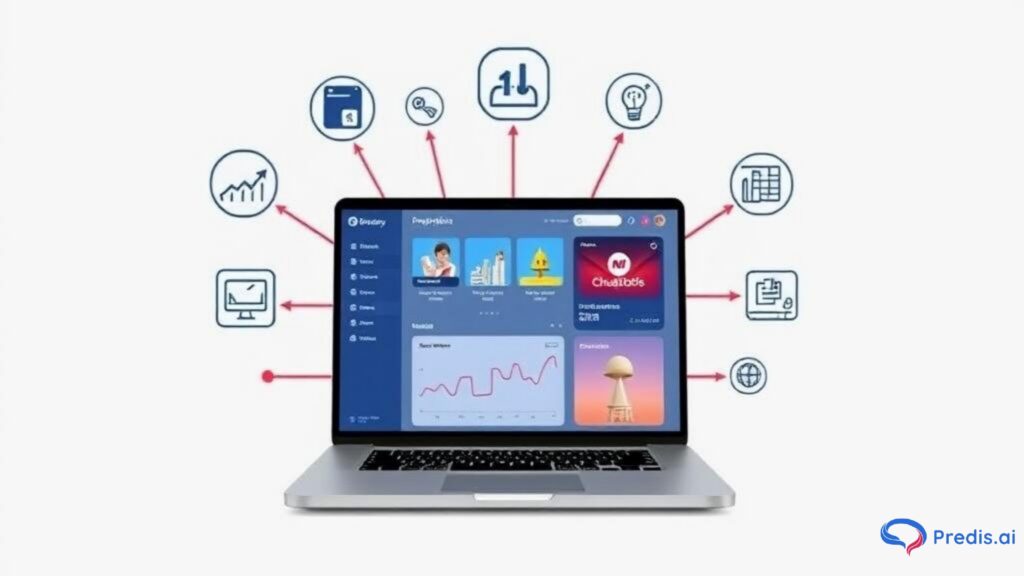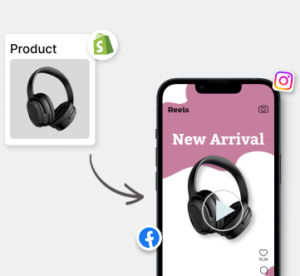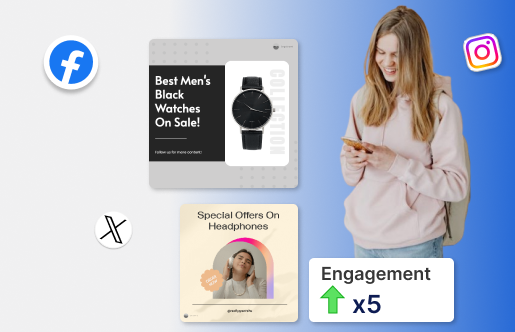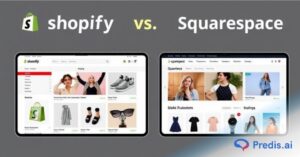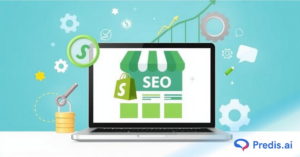Dropshipping is easy to start but hard to scale. Many store owners spend endless hours managing products, updating listings, and responding to customers manually a process that quickly becomes overwhelming. That’s where AI tools for dropshipping make a difference. They help automate product research, optimize pricing, and create better ads in less time, letting you focus on strategy instead of daily tasks.
By using artificial intelligence to simplify operations and marketing, you can run your dropshipping business more efficiently and profitably. From product discovery to customer engagement, AI is transforming how online stores grow faster, smarter, and with fewer mistakes.
Why AI Is a Game Changer for Dropshipping
AI is not a magic wand, but it is the multiplier that turns repetitive tasks into automated systems. Instead of spending hours digging through trends, testing ad creatives, or manually replying to support tickets, AI speeds those tasks up and reduces human error. That means faster decisions, fewer costly mistakes, and more time to focus on strategy and supplier relationships.
Here are three concrete ways AI improves dropshipping right away:
- Better product research. AI scans marketplaces, social trends, and competitor listings to surface products with real demand and healthy margin potential in minutes.
- Smarter pricing. Dynamic pricing models help you respond to competitor moves and demand shifts so you protect margins without losing sales.
- Faster customer support. AI chatbots and automated responses handle common queries instantly, which improves response times and frees you to solve higher-value issues.
AI is a force multiplier, not a replacement. It removes friction so you can focus on higher-level choices that actually grow the business.
Streamlining Product Research with AI
Finding winning products used to mean long hours of manual hunting, trial and error, and gut calls. AI cuts through that guesswork by scanning marketplaces, social trends, and competitor catalogs at scale. It can surface products with rising search volume, steady social buzz, low seller saturation, and supplier reliability all in minutes instead of days.
Common AI tools for this step include product finders, trend analyzers, and competitor scanners. A product finder looks across marketplaces for items with growing demand and good price gaps. A trend analyzer tracks search volume and social mentions over time. A competitor scanner shows how many sellers list a product and what price ranges they use. Together, these signals let you spot opportunities quickly and avoid crowded niches.
Here is a simple example of how AI helps compare profit margins and decide fast. Imagine the AI returns two candidate products with these numbers:
Product A
Sale price: $29.99
- Supplier cost: $8.00
- Shipping cost: $3.50
- Marketplace fee: 10% of sale price
- Estimated ad cost per sale: $2.00
Product B
- Sale price: $39.99
- Supplier cost: $15.00
- Shipping cost: $4.00
- Marketplace fee: 10% of sale price
- Estimated ad cost per sale: $3.50
We calculate estimated net margin per sale step by step.
Product A calculations
- Marketplace fee = 10% of $29.99 = $2.999 → round to $3.00.
- Total costs = supplier $8.00 + shipping $3.50 + fee $3.00 + ad $2.00 = $16.50.
- Add supplier and shipping: 8.00 + 3.50 = 11.50.
- Add fee: 11.50 + 3.00 = 14.50.
- Add ad: 14.50 + 2.00 = 16.50.
- Net margin = sale price $29.99 − total costs $16.50 = $13.49.
Product B calculations
- Marketplace fee = 10% of $39.99 = $3.999 → round to $4.00.
- Total costs = supplier $15.00 + shipping $4.00 + fee $4.00 + ad $3.50 = $26.50.
- Add supplier and shipping: 15.00 + 4.00 = 19.00.
- Add fee: 19.00 + 4.00 = 23.00.
- Add ad: 23.00 + 3.50 = 26.50.
- Net margin = sale price $39.99 − total costs $26.50 = $13.49.
In this example both products yield the same estimated margin of $13.49. An AI tool surfaces these inputs instantly and lets you compare many SKUs at once. From here you can add secondary filters before testing, such as supplier lead time, return rate risk, or social virality score. That helps you pick the product that is not only profitable on paper but also lower risk or easier to scale.
In short, AI turns what used to be a slow, manual spreadsheet exercise into a rapid, data-driven shortlist so you can test winners faster and spend less time on losers.
Creating Product Listings and Marketing Content
Once you have found winning products, the next challenge is making them stand out. Writing compelling product descriptions, designing visuals, and creating ads can take hours, especially when you are testing multiple items at once. AI helps simplify this process by turning your product information into ready-to-publish creative assets in just a few clicks.
AI writing tools can generate engaging product titles, benefit-focused descriptions, and SEO-friendly bullet points based on your input. Instead of manually drafting copy for every product, you can enter a few key details such as the name, category, and target audience, and instantly receive polished listings. This ensures consistency across your store and saves valuable time.
For visuals and ad creatives, AI can automatically design product images, mockups, and even short promotional videos. Tools like Predis.ai’s eCommerce Ad Maker help you create branded ad templates, while the AI Video Maker can turn your product photos or descriptions into professional-looking video ads for social media or YouTube.
This level of automation improves both speed and branding. With AI managing repetitive creative tasks, you can focus on refining your message, testing variations, and scaling campaigns more effectively without needing a large creative team.
Smarter Pricing and Inventory Management
Pricing and inventory decisions can make or break a dropshipping business. Setting prices too high can drive customers away, while setting them too low can shrink your profit margins. AI helps solve this balancing act by analyzing competitor prices, demand patterns, and seasonal trends to recommend optimal pricing in real time.
For example, AI can detect when a product’s demand is spiking and suggest a small price increase to maximize profit during that peak period. Similarly, if your competitors drop their prices, AI can recommend temporary adjustments to stay competitive without completely sacrificing your margins. This level of pricing intelligence allows you to react instantly instead of waiting for weekly reports or manual checks.
Inventory management also benefits greatly from AI. Smart algorithms forecast demand based on sales history, customer behavior, and external factors like holidays or market trends. This helps you maintain just the right amount of stock to meet demand while preventing overselling or dead inventory.
By combining automated pricing and inventory forecasting, AI helps you protect profits, reduce operational waste, and maintain smooth order fulfillment—all of which contribute to a more stable and scalable dropshipping business.
How Predis.ai Helps with Ads and Customer Engagement

Predis.ai turns a single product brief into a full set of tested, platform-ready ad creatives so you can launch campaigns faster. Drop in a product name, a short feature list, and a target audience, and Predis.ai generates multiple headlines, caption variants, thumbnail options, and short video cuts optimized for Facebook, Instagram, TikTok, and YouTube.
For E-Commerce ads, the AI product video maker and YouTube Shorts Maker convert product photos, demo clips, or simple scripts into short, attention-grabbing videos with auto captions and optional voiceovers. The Voiceover Video Maker adds natural-sounding narration without hiring talent. That means you can produce 8 to 12 ad variations from one brief in the time it used to take to make one ad.
Predis.ai also helps you test and scale quickly. Create several creative permutations, run small A/B tests to find winners, then use Content Scheduler and Auto Post to publish winning creatives at peak times. The Content Approval Flow keeps stakeholders in sync so campaigns move from draft to live in fewer steps.
On the engagement side, Predis.ai turns reviews and product highlights into UGC-style clips and social posts with the Social Media Post Generator. Pair those assets with simple chatbot flows or templated replies and you get faster response times and more consistent customer touchpoints. In short, Predis.ai reduces manual work across creation, testing, publishing, and engagement so you can focus on strategy and growth.
Boost Sales on Social Media with AI ⚡️
TRY NOWAutomation for Operations and Order Management
AI smooths the daily grind of running a dropshipping business by connecting sourcing, order tracking, and fulfilment into one automated flow. Instead of manually checking supplier stock or routing orders, AI systems use rules and real-time data to decide where each order should go. That reduces errors and speeds up delivery.
For example, automatic order routing sends each order to the supplier with the best combination of stock availability, price, and shipping time. If Supplier A has stock but a long lead time, the system can route higher-priority orders to Supplier B that ships faster. AI can also push supplier updates automatically, such as low-stock alerts, restock ETA requests, and purchase order confirmations.
AI monitors tracking data and flags delays before customers notice. When a shipment shows an unusual transit event or misses a milestone, the system can open a ticket, notify the customer with an explanatory message, and trigger backup actions like reordering from an alternate supplier. That proactive approach reduces refunds, disputes, and negative reviews.
On the logistics side, AI integrates with 3PL software to coordinate multi-warehouse fulfilment, automate label generation, and sync tracking data—optimizing carrier selection and shipping routes based on cost, delivery time, and historical performance. Together, these automations cut manual work, improve delivery reliability, and keep your customers informed and satisfied.
Best AI Tools to Improve Your Dropshipping Business
AI tools have become the backbone of successful dropshipping. From product research and automation to ad creation and customer support, each stage of your workflow can now be optimized with AI.
If you want to save time, boost accuracy, and scale profitably, here are some of the best tools to consider starting with the one that covers almost everything you need.
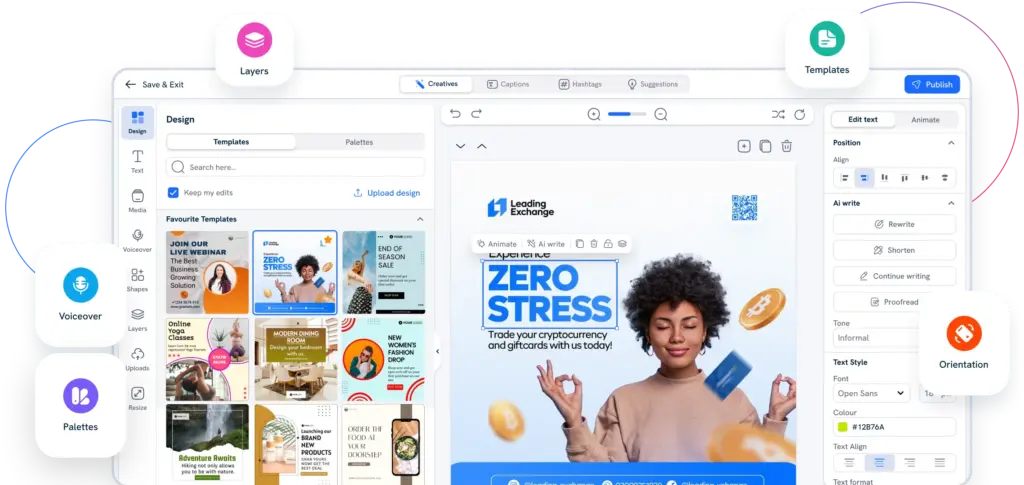
1) Predis.ai: The All-in-One AI Solution for Creatives, Ads, and Campaigns
What it does:
Predis.ai is a complete AI-powered marketing and creative workflow tool built for eCommerce and dropshipping. It helps you create product listings, ad creatives, social media posts, short videos, and captions, all from a single product link or brief. You can also schedule and publish campaigns automatically, making it a true end-to-end solution for your content and ad needs.
Pricing:
Free tier available; paid plans start around $32/month.
Pros:
- All-in-one creative, content, and scheduling platform.
- Generates ad visuals, captions, and videos within minutes.
- Easy to repurpose product listings into social posts or video ads.
- Saves hours of repetitive content work, perfect for small teams.
Cons:
- Some AI outputs may need light editing for brand tone.
- Advanced analytics and bulk features are in higher tiers.
Predis.ai stands out because it combines what usually takes three or four separate tools: creative generation, ad building, and post scheduling into one. It’s fast, reliable, and tailor-made for eCommerce and dropshipping stores looking to grow with consistent, engaging content.
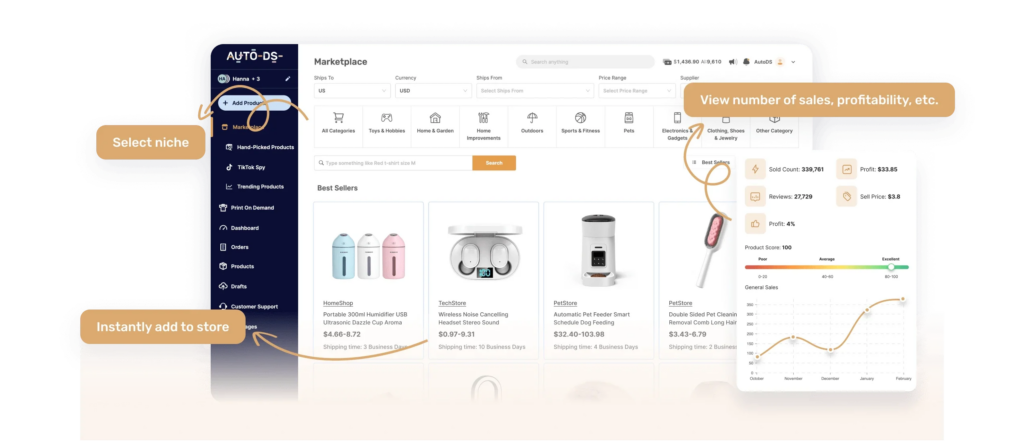
2) AutoDS — Dropshipping Automation and Product Research
What it does:
AutoDS automates product research, supplier integration, and order fulfillment. It scans marketplaces for trending products, calculates profit margins, and syncs directly with Shopify, Wix, and WooCommerce.
Pricing:
Plans start around $29–$30/month.
Pros:
- Strong automation for listing and fulfillment.
- Real-time supplier sync and order tracking.
Cons:
- Focused mainly on backend operations.
- Limited creative and ad features.
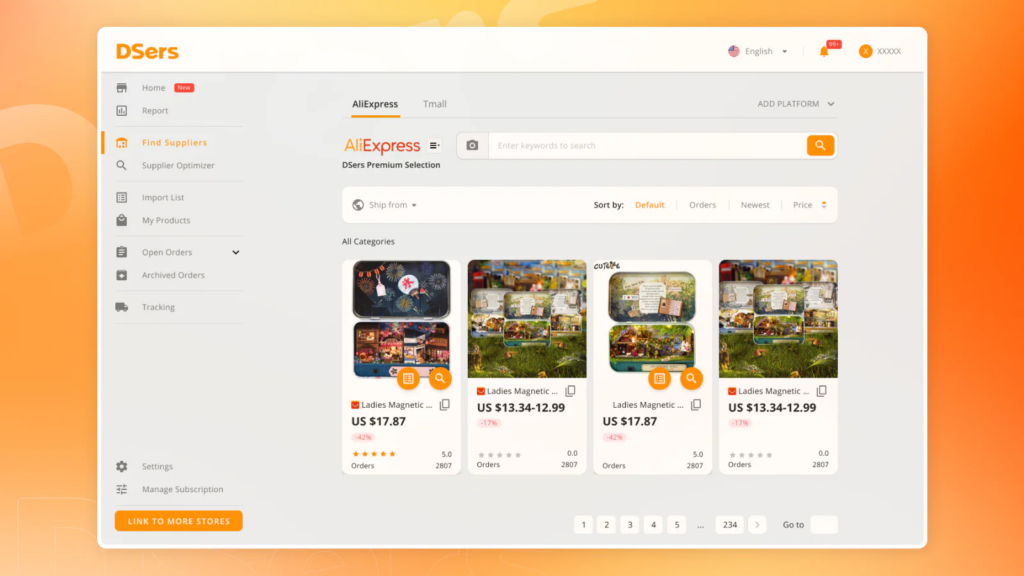
3) DSers: Order Management and Supplier Syncing
What it does:
Official AliExpress partner tool for dropshipping. It streamlines bulk order processing, tracks supplier data, and helps manage multiple products efficiently.
Pricing:
Free plan available; paid plans start at $19.90/month.
Pros:
- Simple, reliable, and affordable.
- Works well for large product catalogs.
Cons:
- Limited analytics and marketing functions.
- No built-in automation beyond order processing.
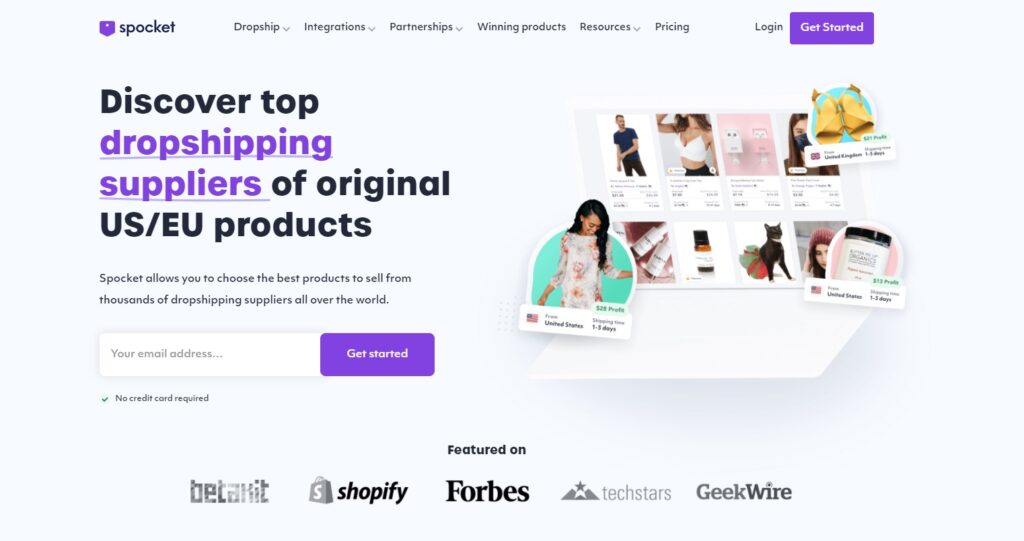
4) Sell The Trend: All-in-One AI Dropshipping Platform
What it does:
“Sell The Trend” is an all-in-one dropshipping platform designed to help users find trending products, create online stores, and automate their dropshipping business.
Pricing:
Plans start at $29.97
Pros:
- Easy product importing and automation
- Integrates with Shopify & WooCommerce
- Great for beginners
Cons:
- Not free
- Price tier limitations
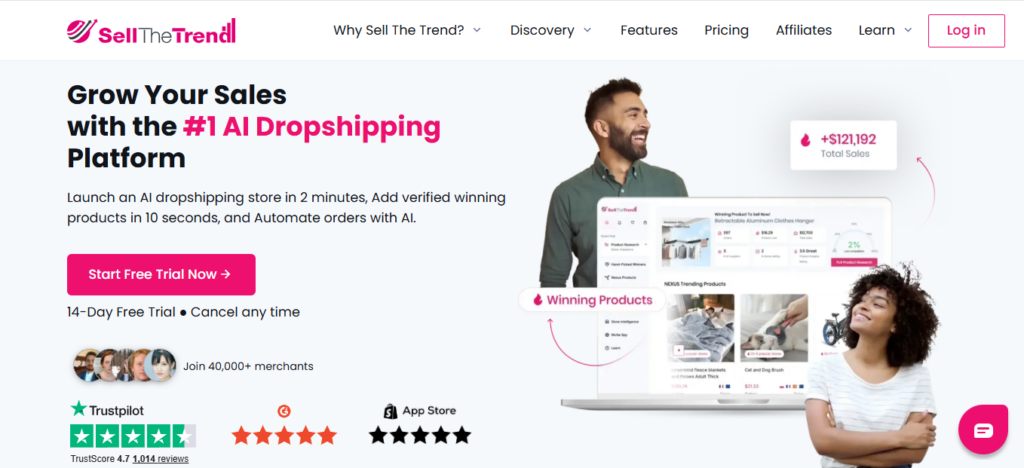
5) Spocket: Fast Supplier Marketplace
What it does:
Spocket connects dropshippers with vetted suppliers in the US and EU for faster shipping and better product quality. It integrates with Shopify and WooCommerce and helps automate order fulfillment.
Pricing:
Plans vary; basic plans typically start around $29/month.
Pros:
- Offers suppliers with faster delivery options.
- Easy to add new products to your store.
Cons:
- Limited supplier network.
- Slightly higher product prices than direct sourcing.
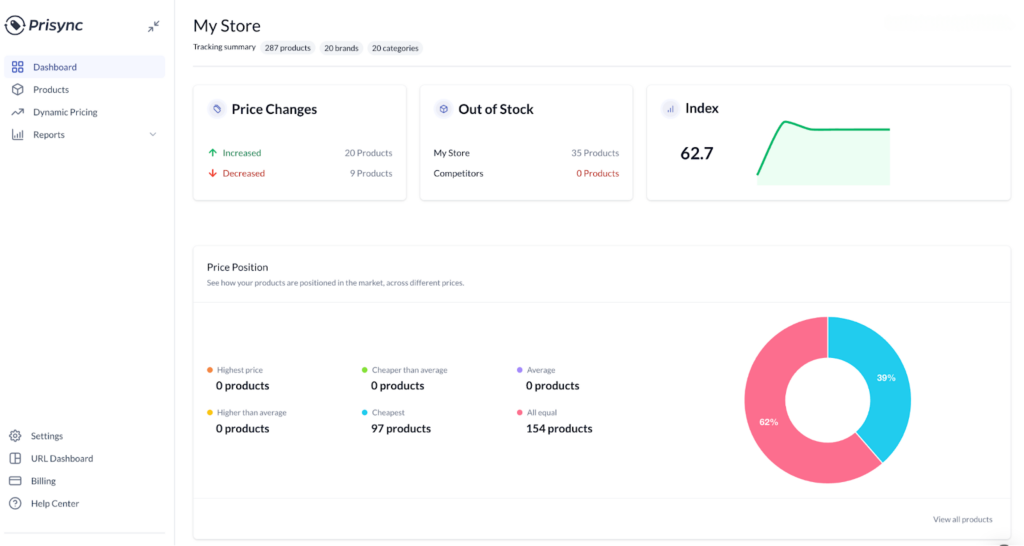
6) Prisync: Smart Pricing and Competitor Monitoring
What it does:
Prisync helps you track competitor pricing and stock levels. It automatically adjusts your product prices to remain competitive while keeping margins healthy.
Pricing:
Starts at $99/month.
Pros:
- Real-time competitive pricing data.
- Dynamic repricing to protect profits.
Cons:
- Best suited for larger stores with multiple SKUs.
- Does not manage other parts of the business workflow.

7) Tidio: AI Chatbot for Customer Support
What it does:
Tidio is an AI-powered chatbot and live chat system that automates customer support. It can handle FAQs, track orders, and send follow-ups to improve customer satisfaction.
Pricing:
Free plan available; paid plans start from $29/month.
Pros:
- Improves response time and reduces support workload.
- Easy integration with Shopify and WooCommerce.
Cons:
- Complex automation requires setup time.
- Not a full CRM or advanced helpdesk.
Quick Guidance: How to Pick the Right Tools
- If you want to save time creating ads, posts, and videos, go with Predis.ai — the most complete creative automation platform for dropshippers.
- If operations and sourcing are your bottlenecks, start with AutoDS or DSers and connect them to your store.
- For pricing optimization, use Prisync to maintain margins.
- For faster fulfillment, consider Spocket.
- To handle support automatically, set up Tidio.
Conclusion
AI is reshaping how dropshipping businesses operate, making it easier to handle research, automation, marketing, and customer service with greater accuracy and less effort. By integrating the right tools, you can eliminate repetitive work, make faster decisions, and focus on growth instead of constant maintenance. From smarter pricing and product discovery to customer engagement, AI gives you a system that scales smoothly as your store grows.
If you are ready to take your dropshipping business to the next level, try Predis.ai to automate your content creation, ads, and video campaigns. It is the easiest way to stay consistent, build your brand presence, and grow your sales while saving hours each week.
AI helps automate time-consuming tasks like product research, ad creation, customer support, and pricing. It allows you to analyze market trends, generate creatives, and make faster data-backed decisions that increase efficiency and profitability.
Predis.ai is the best all-in-one AI tool for creating ad creatives, videos, product posts, and social media content. It also includes scheduling and publishing features, making it ideal for eCommerce and dropshipping brands.
AI automates order routing, stock tracking, and supplier communication. It ensures your orders go to the best supplier automatically and notifies you of delays or low stock so you can act fast.


